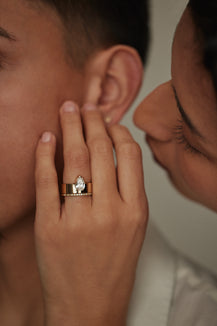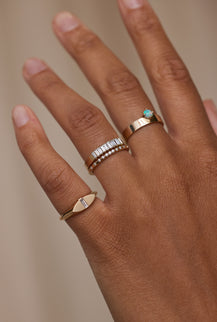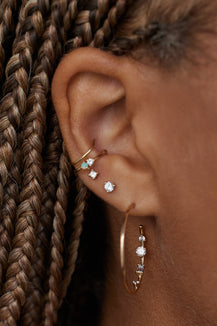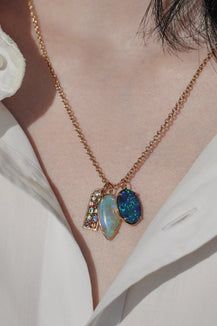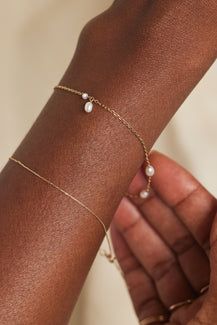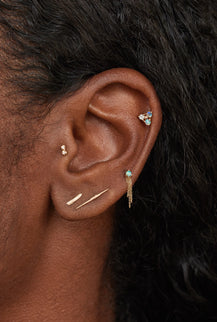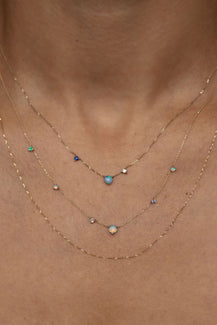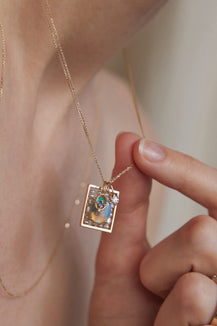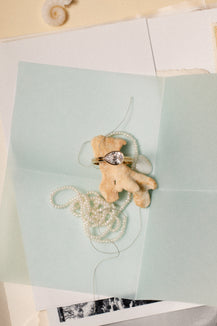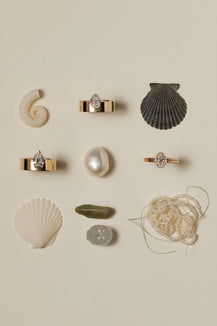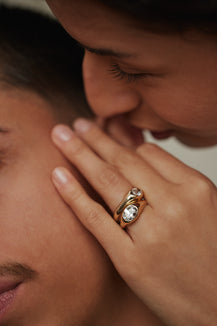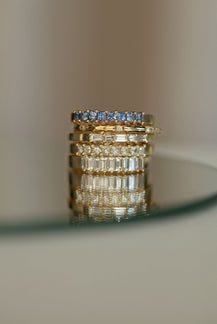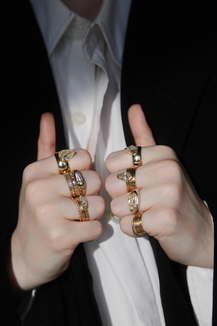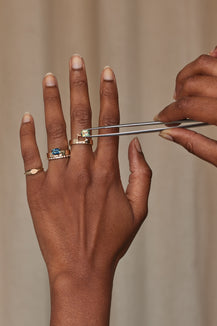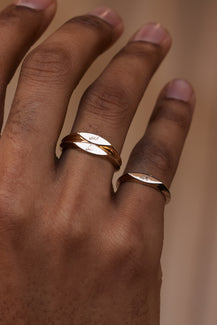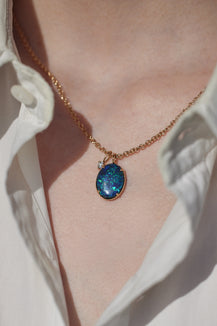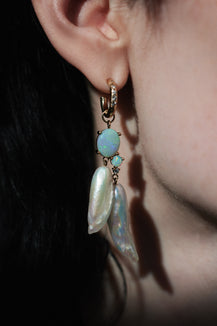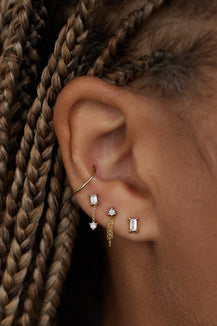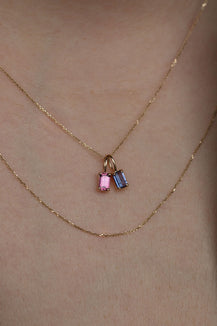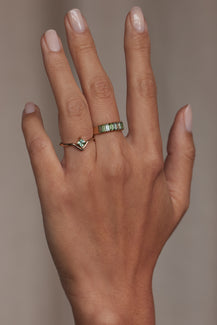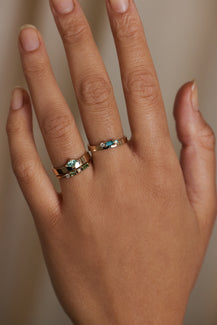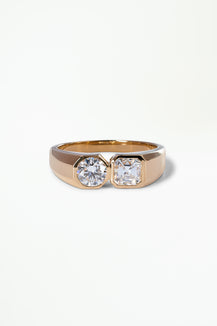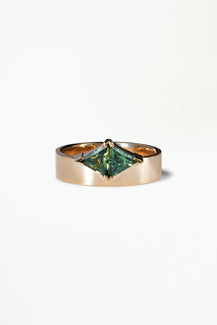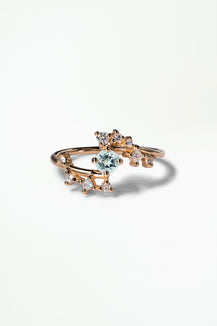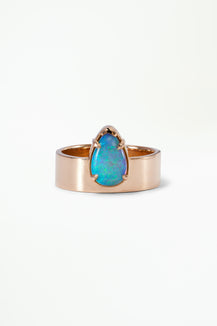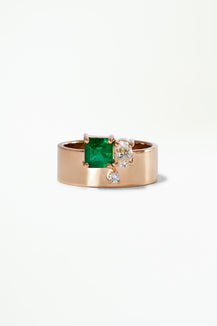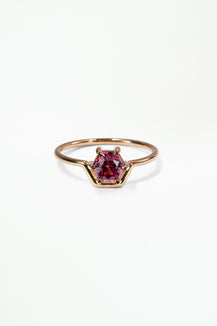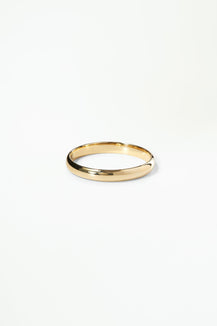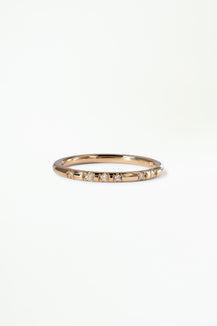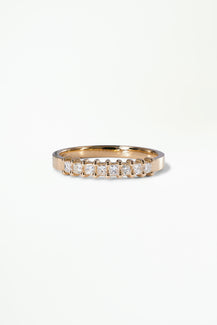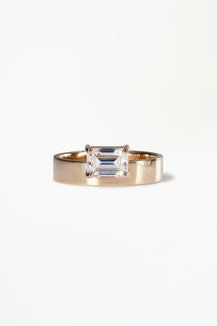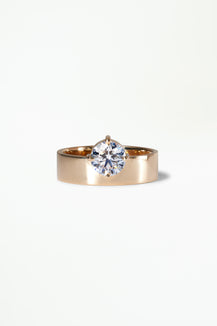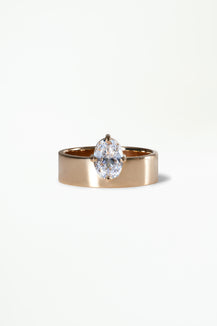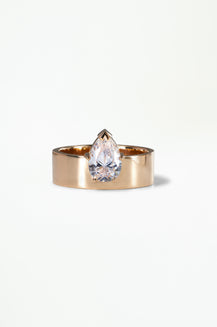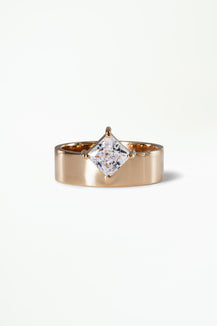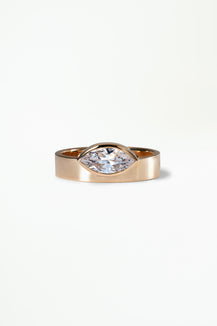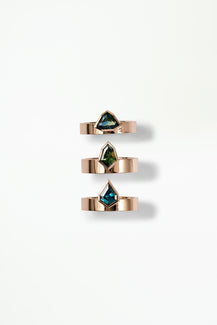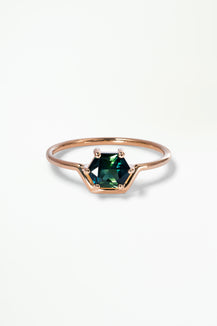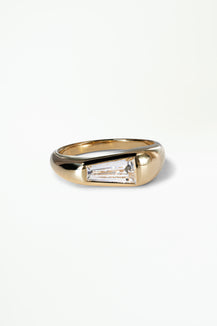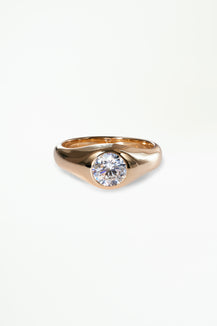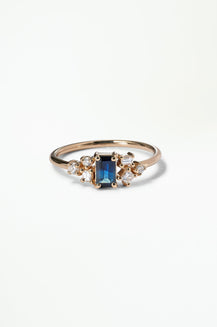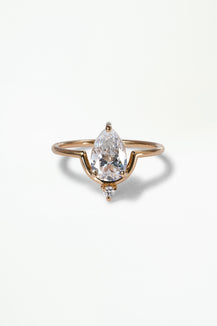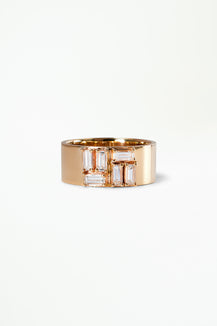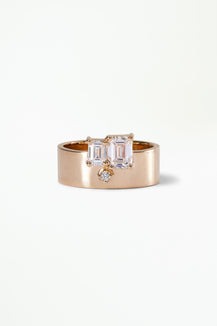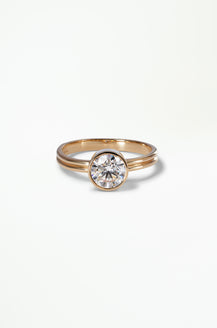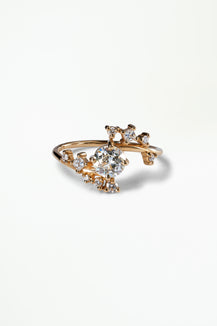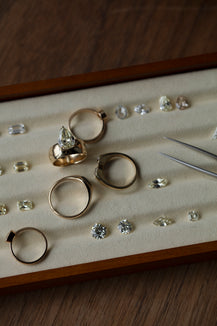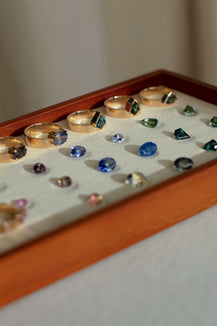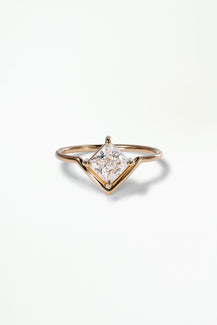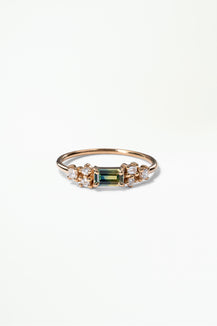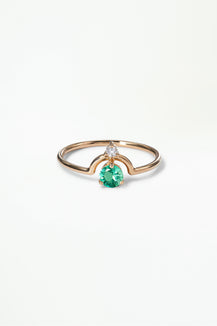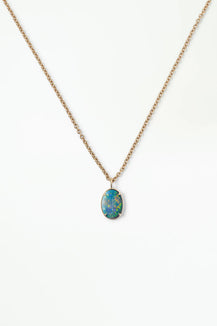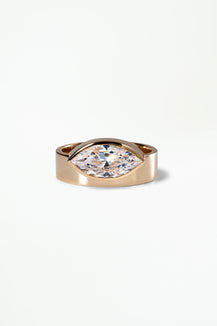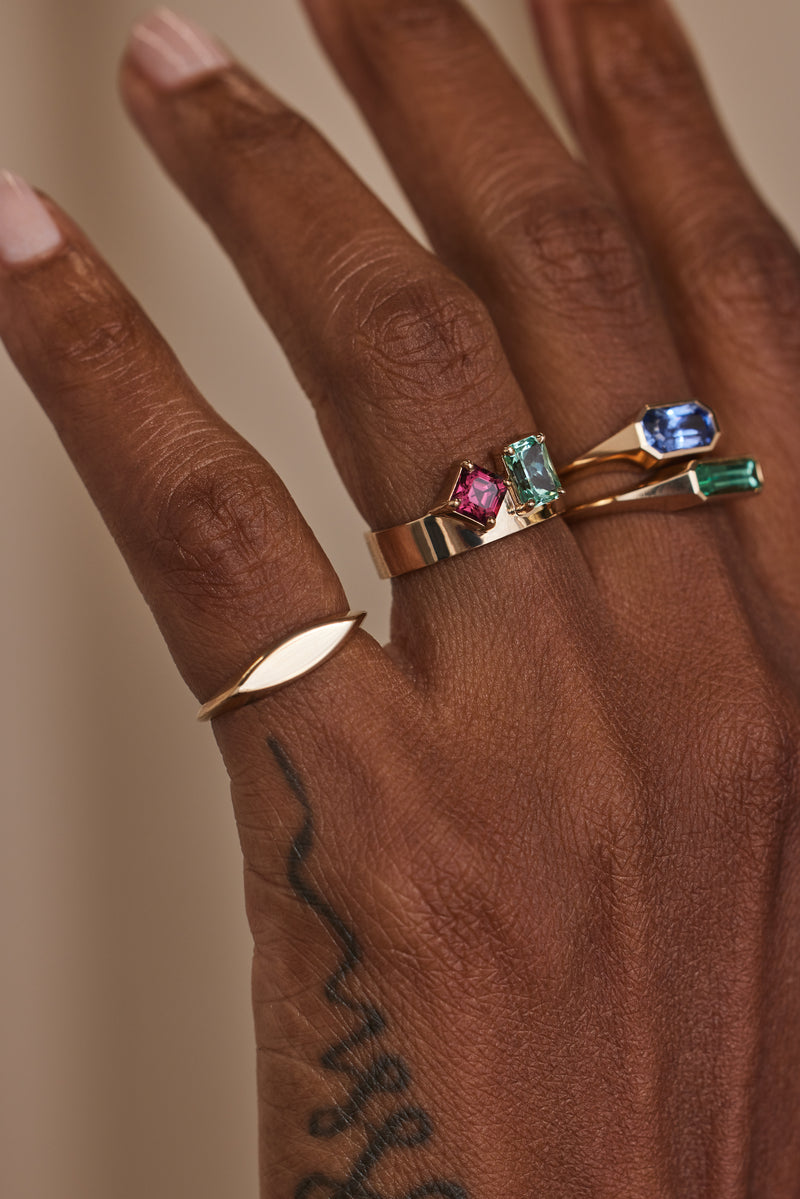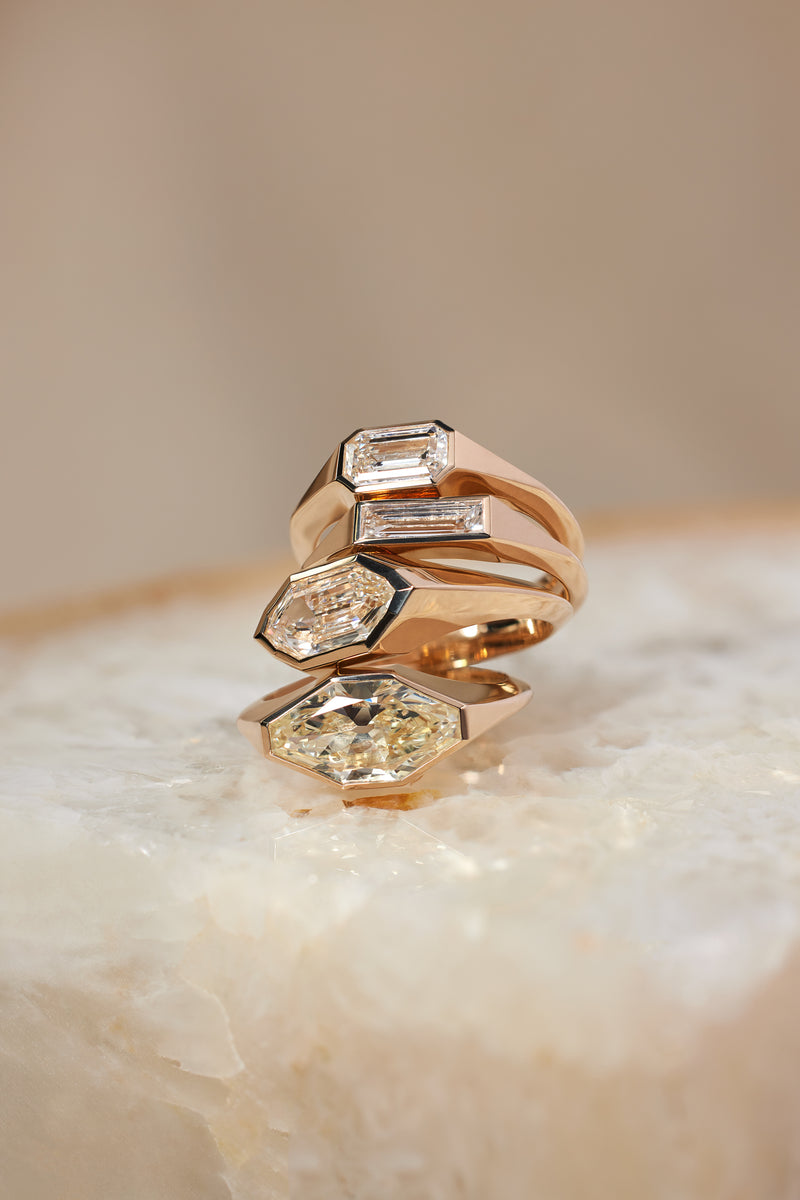Discovering the Undiscovered
- Posted on 04.17.20
- OPALS
Opals have always been my idea of magic captured in the reality of nature. They feel understated – less sparkly than faceted gemstones and diamonds, but even more mysterious and otherworldly.
They’re like little universes within themselves. When I first started making fine jewelry, opal was a natural choice for my first full fine jewelry collection, accented by little diamonds. It was a touch of something I had never seen before in fine jewelry, and gave it a sense of traditional beauty.

Truth be told, I didn’t really appreciate fine jewelry before that point.
On the life-changing trip my family took to the South Pacific Islands, we stopped by Australia. I remember getting a boulder opal pendant looped onto a leather cord there, which I wore endlessly until the cord thinned and snapped. I still have this stone today in my studio!

Back then I was mesmerized by the stone’s flashes of color, but also com- forted by its ability to transport me to a memory of another time and place.
Opals are the only stone that we are trying to trace from mine to market ourselves, the due diligence that the few vendors we work with are ex- pected to do. We purchase the rough opal from the miner in Queensland, Australia directly, then send it to the cutting factory. Many of these cutting facilities are in China, where the stones are cut in mass, and stones are mixed together by color, rather than by origin. We have finally found a smaller, family-owned facility in China that will cut small batches for us, and run their facility with responsible health standards. I’m on a text basis with the company owner, who is always candid and open with me, which is note- worthy (more on this in a following field note.)
Transparency and traceability commonly disappear when you cut opals into calibrated gemstones (which means stones that are consistent in shape and color). If you’re not specialized in it already, cutting opal is very, very, specific. It’s a very soft stone, so it easily pulverizes when you work with it – resulting in higher wastage than other stone types, and lower profit mar- gins. Additionally, calibrated opals don’t sell for as much as other stones (like sapphires or tourmalines) despite requiring the same (if not more) work to produce. So, for these reasons, it’s been challenging to find transparent opal supply chains.
If there is little profit margin to be had, then manufacturers naturally have low incentive to put in the extra labor and paperwork necessary to keep opals separate by origin, especially since customers naturally ask opals to be sorted by quality first. From what I understand, provenance is counter intuitive both logistically and financially to cutting facilities that sell direct- ly to designers - so rarely do cutting factories value traceability. What I’ve been working on has been forging a relationship with both a miner and a cutting factory so that I can bring my own rough opal to a facility to be cut, rather than buying from someone who runs a cutting facility (but not the mine) themselves.
From the cutting factories, we receive all wastage and finished goods in Brooklyn. As a result, we see the impact this process has on even the smallest sampling from the mine, and build a holistic understanding of how to reduce wastage through design, something I believe none of my designer peers are really doing. All colors and shapes and scraps that result from the cutting process must be made into something by WWAKE.

It’s taken me three years to build a genuine relationship with a miner, and a responsible cutting factory that also can produce the range of opals that speak to you, our WWAKE customer. If I can spend the extra time aligning all these pieces together, then that’s the magic, that’s when we’re all con- nected. From that connection, I can then build deeper impact initiatives. I’m interested in developing a program or an offset in Australia to help speak to the environmental sustainability of this material. I’d love to partner with a reforestation and wildlife conservation fund that gives back to the earth.
I think that’s one thing that’s missing for me at this source. Now more than ever, Australia needs help rehabilitating its wildlife. My approach is so much about progress over time, rather than finding perfection at first sight; the latter’s just not realistic.
